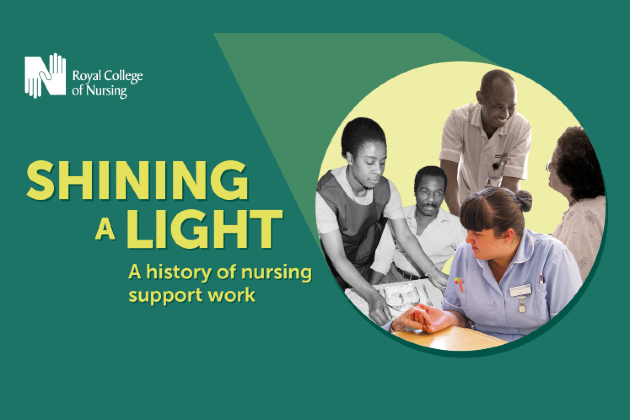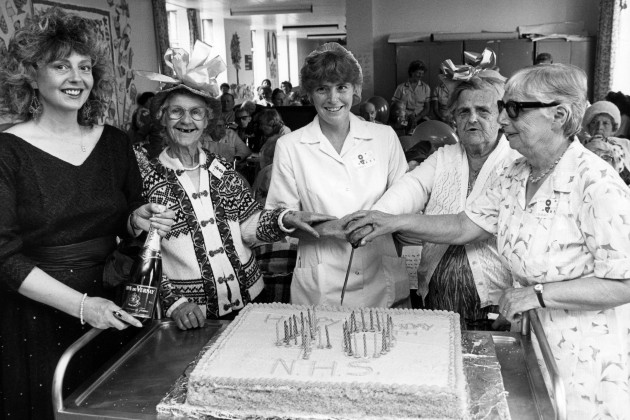Have you ever wondered what sets children's nursing apart from adult care or when caring for children became its own branch of nursing? A new exhibition at the RCN Library and Heritage Centre holds the answers.
“While all our exhibitions look at the history of nursing and its practice, there’s also a contemporary edge,” says Antonia Harland-Lang, Events and Exhibitions Co-ordinator with the RCN Library and Archive Service. “A timeline shows how children’s nursing has developed alongside advances in children’s rights, sometimes influencing policies and being ahead of the curve.”
Historically, it's a field that's been undervalued
And for the first time in the library’s exhibition history, experienced children’s nurses volunteered to create all aspects of the displays. “They’ve taken a lead on everything from researching key themes, to creating labels and loaning us objects,” explains Antonia. “They’ve brought along some really interesting stories that we wouldn’t have had otherwise.”
Everyone’s been keen to draw out how children’s nursing is focused on the whole family now, says Antonia. “Children and young people’s nursing is a specialist field that needs specific expertise,” she says. “Many of the nurses we contacted spoke about how children aren’t just little adults. We want to highlight the skills of children's nursing staff, especially as historically it’s a field that’s sometimes been undervalued.”

Children’s cancer nurse Angela Houlston has been volunteering at the Ashmolean Museum in Oxford since retiring last year. “It’s been a whole new world opening for me,” she says. “How exhibitions are curated is fascinating.”
With a nursing career spanning 35 years, she jumped at the chance to become involved in the exhibition, helping to research the Jenny Lind Children’s Hospital in Norwich. She also loaned a Ladybird book she’d used in her own practice.

After contacting Oxford Children’s Hospital, where she’d been a matron, they loaned a Herbie the Hedgehog glove puppet and a colouring book, used to distract children who were having blood tests.
Angela also wrote the label accompanying a tabard, similar to those she’d worn when nursing. “We used to look for curtain material that was bright, cheerful, and depicted characters from children’s TV programmes,” says Angela. “Thomas the Tank Engine was popular, as were Disney characters. We all wore tabards and the aim was to have the nicest one!”

Retired children’s nurse Ursula Madel has loaned a glove puppet she used to distract children as she cared for them. “We found it when we were on holidays in France,” says Ursula, who’s been a children’s nurse for half a century, spending the last 20 or so years in the community.
“When you’re treating a child at home, it’s important to make them feel comfortable,” says Ursula. “You might also have siblings looking on. To gain their trust, I would play with them, using different things I’d collected.” The puppet toy features a mother bird and four chicks, sitting on a nest. “It’s almost like a gentle Jack-in-the-box,” she says. “All the birds can be hidden in the nest and gradually you bring them all out. It’s made of very soft material and children love it.”

Louise Young loaned her belt buckle and badge from when she first qualified as a children’s nurse in 1988 at Westminster Children’s Hospital. “The uniform changed almost as soon as I qualified, so I never really wore them,” she recalls. “We stopped wearing frilly hats too. At the time, my nieces were quite tiny and intriguingly, one of them was terrified every time she saw me in my nurse’s uniform.”
Both items depict a child in swaddling clothes encircled by a laurel wreath. “But ironically, the child’s proportions are more those of an adult than a baby,” says Louise, who’s currently working as a practice development nurse. “The belt and buckle were also very cold, so you had to be careful if you were picking up a baby.”
For Louise, being involved in the exhibition has been an opportunity to do something positive. “I’ve always been fascinated by history, especially people’s stories,” she says. “It’s been lovely to play a small part.”

Once Upon a Time
From the first children’s hospitals in the 1800s to the development of family-centred care, this exhibition captures it all. Explore emotive tokens from the historic Foundling Hospital, children’s artwork from Bethlem Museum of the Mind, and objects and stories loaned by nursing staff past and present.
Visit the exhibition in person until 27 April at RCN HQ in London. It then transfers to RCN Scotland in Edinburgh from June 2024.








